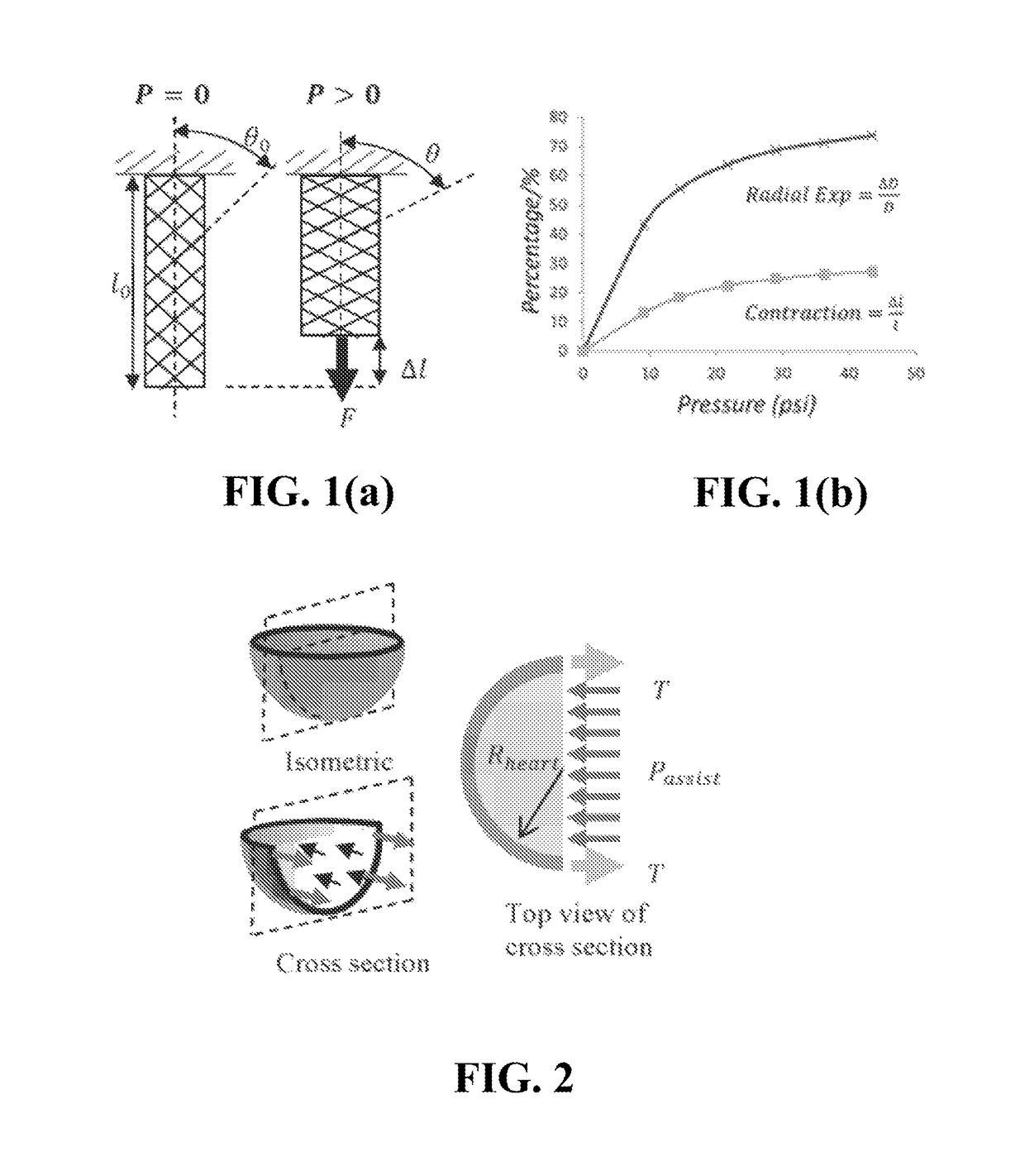Biomimetic actuation device and system, and methods for controlling a biomimetic actuation device and system
a biomimetic actuation and actuator technology, applied in the field of biomimetic actuation devices and systems, can solve the problems of affecting the safety of dcc operation, and many patients dying, and achieve the effect of safe operation
- Summary
- Abstract
- Description
- Claims
- Application Information
AI Technical Summary
Benefits of technology
Problems solved by technology
Method used
Image
Examples
Embodiment Construction
[0076]The force produced by a pneumatic artificial muscle (PAM) depends on its internal pressure and its contraction, but not its initial length. Force increases linearly with increasing internal pressure and decreases with increasing contraction, thus at least two sets of tests are required to characterize the force output of the muscle. Using energy conservation, an expression for the force output of a PAM can be derived:
F=−P dV / dl (1)
where F is output force, P is input pressure, dV is change in the actuator's internal volume and dl is the change in the actuator length.
[0077]For a McKibben PAM, assuming a thin wall and neglecting friction and effects of bladder elasticity, the output force relation is as follows:
[0078]F=P·πD024(3cos2θ-1)(2)
where θ is the braid angle (see FIG. 1(a)) and DO is the diameter of the mesh at a braid angle of 90 degrees.
[0079]Change in the length, Δl, of the actuator shown in FIG. 1(a) is given by:
Δl=lO·ϵ (3)
where lO is initial length and ϵ is con...
PUM
 Login to View More
Login to View More Abstract
Description
Claims
Application Information
 Login to View More
Login to View More - R&D
- Intellectual Property
- Life Sciences
- Materials
- Tech Scout
- Unparalleled Data Quality
- Higher Quality Content
- 60% Fewer Hallucinations
Browse by: Latest US Patents, China's latest patents, Technical Efficacy Thesaurus, Application Domain, Technology Topic, Popular Technical Reports.
© 2025 PatSnap. All rights reserved.Legal|Privacy policy|Modern Slavery Act Transparency Statement|Sitemap|About US| Contact US: help@patsnap.com



